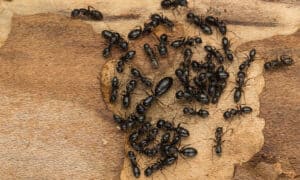Oklahomans are all too aware of how problematic ants may develop if ignored. These small critters can exist in enormous numbers and in a variety of species both outdoors and inside of houses in Oklahoma. This is because of the unique climate, this state provides.
Whether you just have an interest in these little buggers or are looking to identify which ants you have in your home, we’re here to help.
Types of Ants in Oklahoma
Over 12,000 different kinds of ants exist, and the majority of them are red, brown, or black in color. Nearly every place on Earth has ants. Let’s see which ones appear once the weather warms up during the summer in Oklahoma.
Odorous House Ants
Odorous house ants are small, brown ants that prefer sugary treats. They are probably one of the most prevalent ant species seen inside structures in Oklahoma. This species may infest food. Even though these ants don’t represent a concern to the public’s health, they’re still a frequent annoyance pest for homeowners.
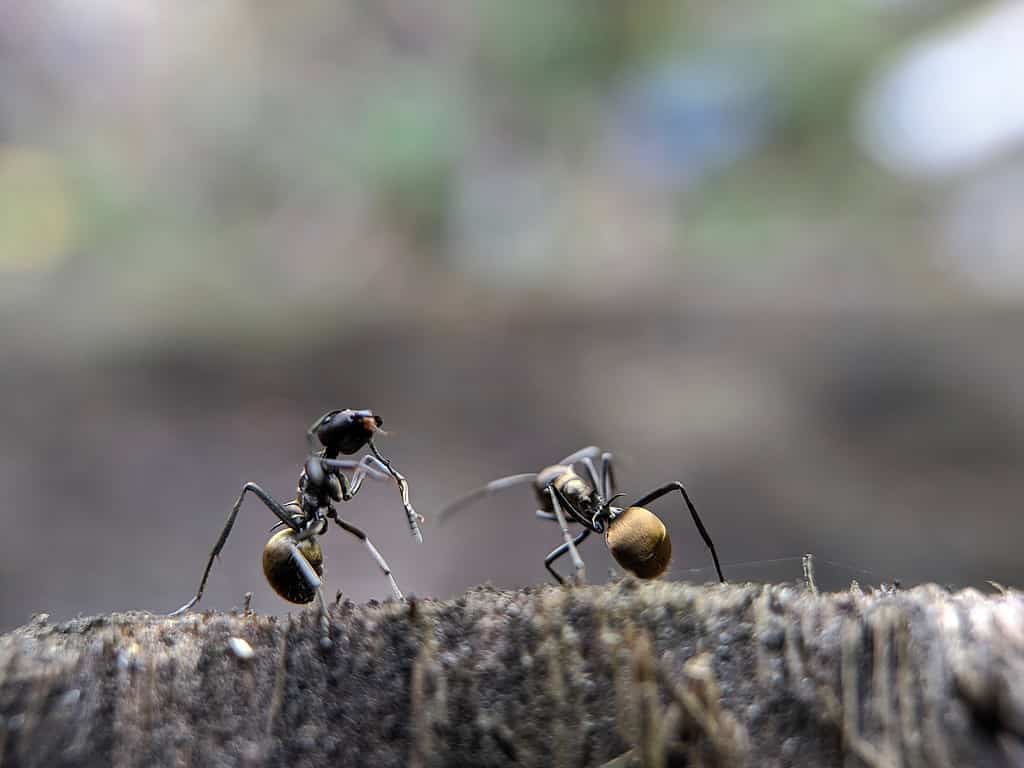
Odorous house ants prefer sugary treats, so keep those sealed in your home to avoid an infestation.
©Dhe Tong/Shutterstock.com
Odorous house ants get their name from the rotting fruit stench they give off when they are squashed since melon or other forms of sugar are what they eat. This type of ant is generally seen outdoors close to roads and roads.
You can also spot odorous house ants in uncovered dirt, or under piles of trash. They are a common issue around water pipelines or under leaking fixtures because, once inside, they tend to stay close to water sources to develop their nests. Since nests can be hidden behind foundations when found indoors,
Carpenter Ants
Carpenter ants come in a variety of sizes and colors, but they are typically covered in a main color that is either black, red, or brown. These ants can also be spotted with a mix of black and red tones.
When a carpenter ant colony achieves maturity, the population could include more than 50,000 ants and up to 20,000 workers. When a colony is two years old, swarmers start to form to disperse the group to new areas.
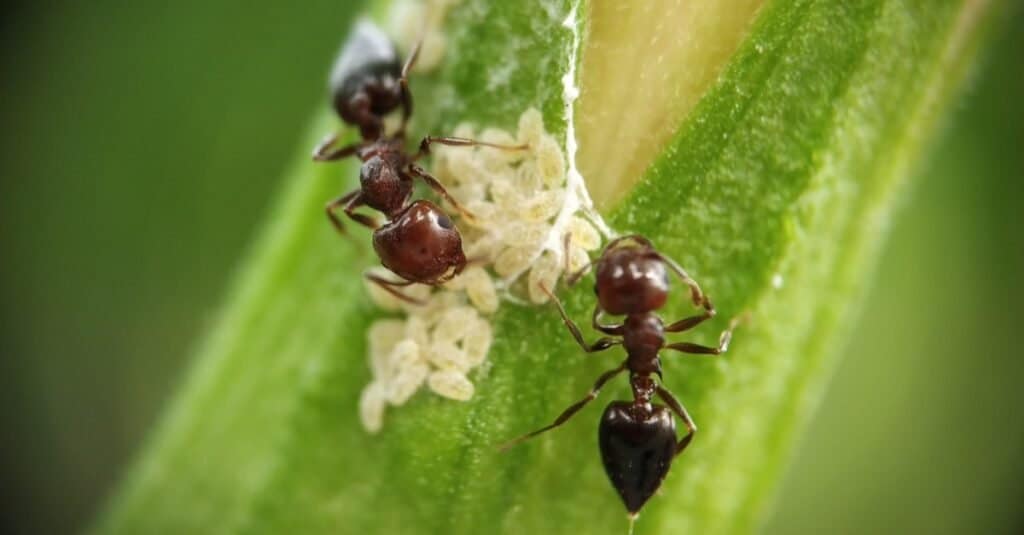
These carpenter ants are keeping their eggs on a yellow hibiscus flower.
©IamBijayaKumar/Shutterstock.com
The carpenter ant lives up to its name by cutting neat tunnels out of wood for a nest. Contrary to the widespread belief that they consume wood like termites, these critters only use wood to build their nests.
Carpenter ants are a devastating pest, thus it is necessary to have them professionally removed to prevent them from spreading too far.
Acrobat Ants
The ant species known as acrobat ants range in color from light brown to black. Acrobat ants can be recognized by several traits, including the form of their midsection when seen from above. Surprisingly, it looks like a heart.
This ant species has a stinger and use it! The discomfort it produces doesn’t usually linger long. A sting from an acrobat ant rarely needs medical attention unless you have a present allergy.
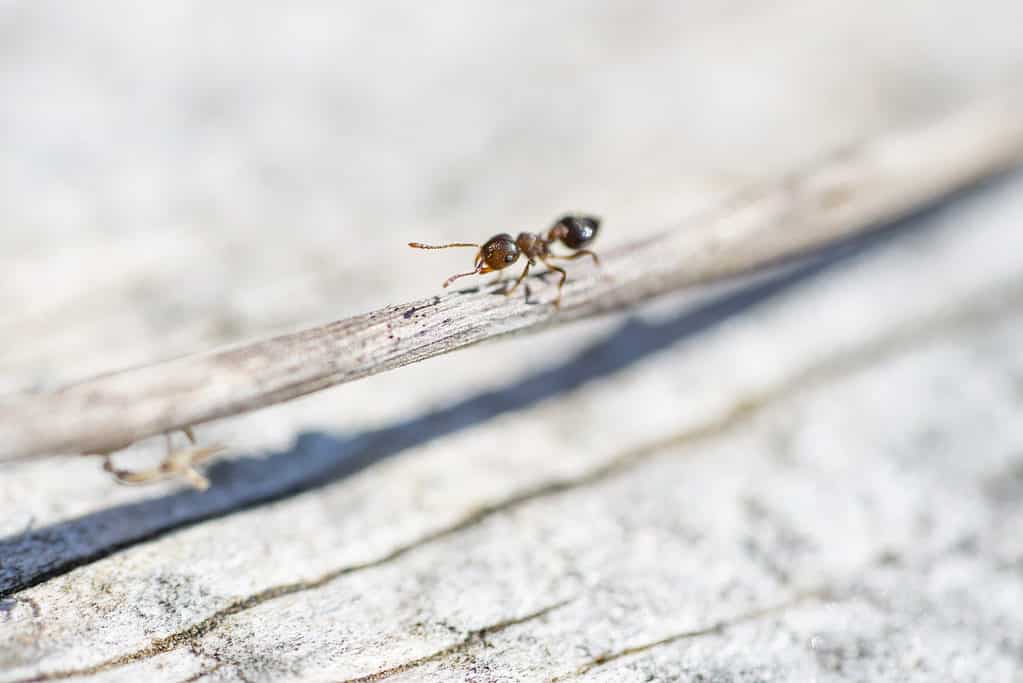
Acrobat ants have heart-shaped abdomens.
©iStock.com/ErikAgar
Outdoor acrobat ant nests, like those of other ants, are most frequently located close to tree stumps, behind mulch, or among other garbage piles. Acrobat ants scout prospective nest sites on residential siding as well.
The normal foraging range for this species is up to 100 feet from the nest. Acrobat ants often build their nests indoors under insulation, within walls, or in places where there is water damage or a lot of dampness.
Red Imported Fire Ants
Red imported fire ants are dark brownish-red, but their name comes from the terrible bites and stings they can inflict. These kinds of ants should always be avoided because they are an invasive species that may be found all over Oklahoma.
This is primarily due to the fact that they will swarm if their nest is messed with! The red imported fire ant’s stings can leave behind uncomfortable welts. These ants need to be left alone and professionally eliminated if you come across them on your property.
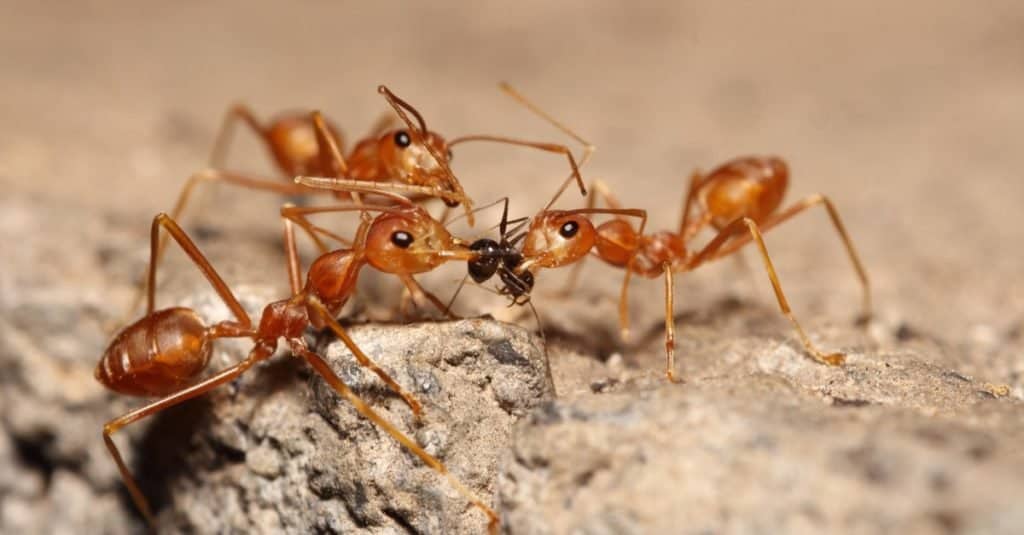
Fire ants live in colonies, which can contain over 200,000 ants. The colony is typically comprised of female worker ants and one queen, who is responsible for laying the eggs.
©sarawuth wannasathit/Shutterstock.com
They will frequently create substantial outdoor mounds in the ground next to foundations, in gardens, or in yards. Red imported fire ants are often found outside, but they can also enter buildings through crevices and holes, HVAC systems, and air conditioning units.
Due to the health risk these ants provide, extermination is necessary when they are discovered inside.
Harvester Ants
Did you know that there are over 22 types of harvester ants in the US? The majority of harvester ants are between 12 and 14 inches long. Their coloration spans from brown to red and some are entirely black.
In addition, many species have thick hairs that attach to the bottom of their heads, giving them the appearance of beards. Harvester ants are a species that can sting their victims painfully, and they have been documented to kill creatures that disturb their nests.

A macro image of these ants allows you to see their fine hairs.
©Kessler Bowman/Shutterstock.com
An extremely huge mound surrounded by a bare piece of soil is a common sign of one of their nests. Ants will remove the surrounding vegetation while they build the nest in order to reduce how much light it eventually gets. Harvester ants typically stay within the nest throughout the hottest parts of the day, but they will emerge when the weather permits to gather seeds or consume insects.
Little Black Ants
Little black ants are a resilient ant species that can usually be found outdoors in dimly lit sheltered locations that provide protection from the sun and weather. While they may flourish in landscaping, these ants also enjoy the area under rocks, dead trees, or concrete cracks.
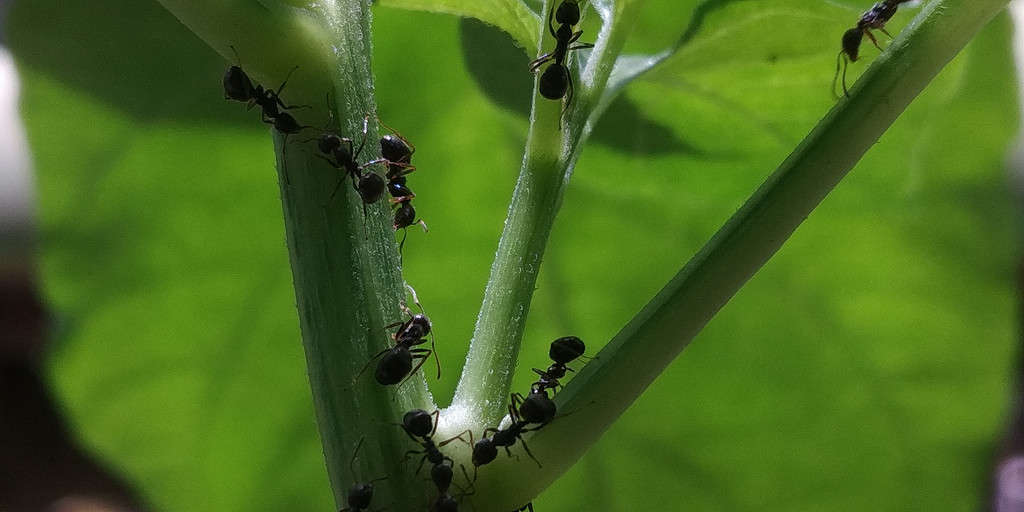
The little black ant (
Monomorium minimum) is a species of ant native to North America.
©iStock.com/Rahmat M Pandi
When a colony has been established inside, they typically construct nests in wall cavities, under flooring, or in baseboards. As their name suggests, are exceedingly small ants that are known for invading homes.
Little black ants are among the tiniest ant species in Oklahoma, with a typical length of 1/16 inches. Despite their name, certain little black ants have the ability to be brown!
When Do Ants Emerge in Oklahoma?
Normally, the ant season in Oklahoma begins in the late winter or early spring. As the weather begins to warm, ants emerge from their hibernating state. Ant activity can therefore start at any point between mid-February and early March, based on the weather warming up.
First to get moving are the worker ants. Considering that finding food is their job. Working quickly is essential for the colonies’ survival. Most species of ants will be out of hibernation around May!
Other Insects Set to Emerge in Oklahoma
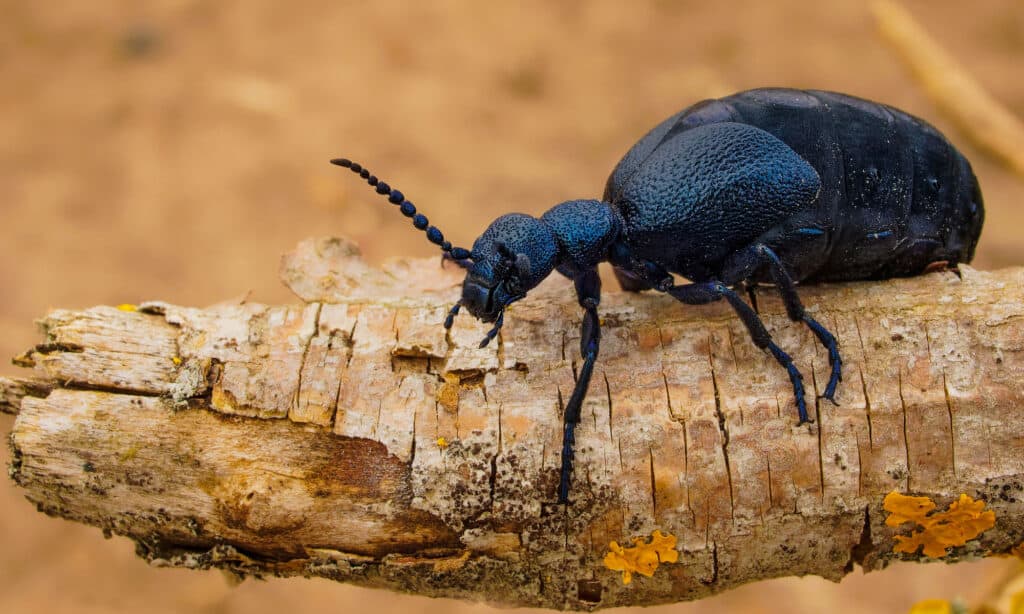
Oil beetles release cantharidin, an irritating substance that can cause blisters, from their abdomen.
©Michal Pesata/Shutterstock.com
Oklahoma has plenty of insects! We’ve found some of the creepiest and crawliest of the group! Let’s take a look at what insects call Oklahoma home!
- Planthopper: The camouflage of a Planthopper makes them look like the plants they eat. They even have a striking appearance of actual leaves on their wedge-shaped body.
- Spined Micrathena Spider: This strange-looking spider, a member of the orb-weaver family, turns out to not be harmful to people. The females’ abdomens are covered in sharp spikes and lumps that deter predators. Every day, they reassemble their spiral or circle webs.
- Giant Walking Stick: These fragile, wingless insects, which have a brief lifespan of fewer than three months, resemble a twig or a stick in both their appearance and form. They move incredibly slowly, and their only means of protection are camouflage and stealth. When startled, they could drop to the ground and stay there until their attacker has moved on.
- Oil Beetle: This is one cool-looking insect! Despite looking like an oil slick, these bugs are dangerous! Cantharidin is a substance that these beetles can release from their abdomen. This substance is extremely irritating and can result in painful skin blisters.
- Goldenrod Crab Spider: To fit with their surroundings, these spiders have the ability to alter their appearance over a few days. In order to disable their victim, they will leap on them after waiting for them on wildflowers.
Bottom Line
There are plenty of ants and other critters that can be found all over the beautiful state of Oklahoma. After reading this piece, we hope you are more educated on identifying the most common ants, and know which ones to steer clear from!
The photo featured at the top of this post is © Ezume Images/Shutterstock.com
Thank you for reading! Have some feedback for us? Contact the AZ Animals editorial team.




